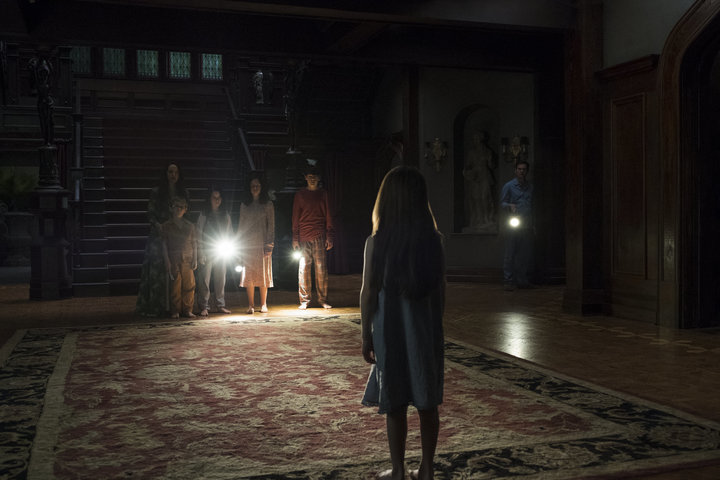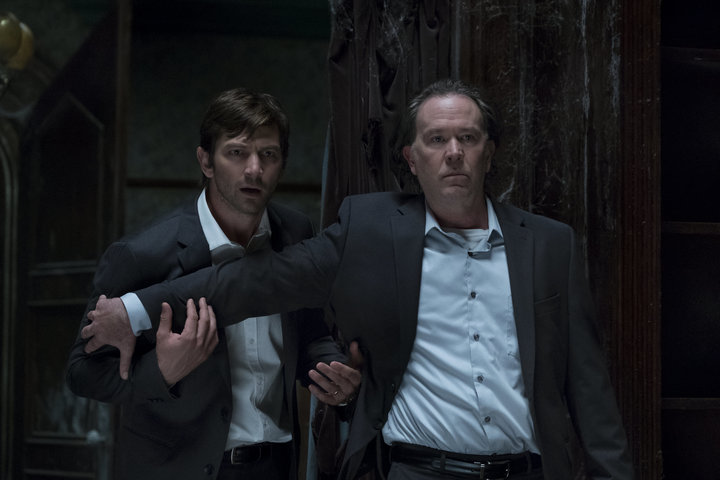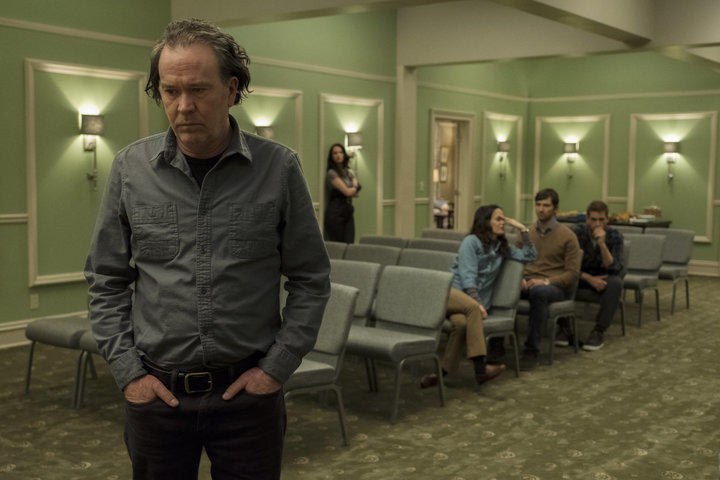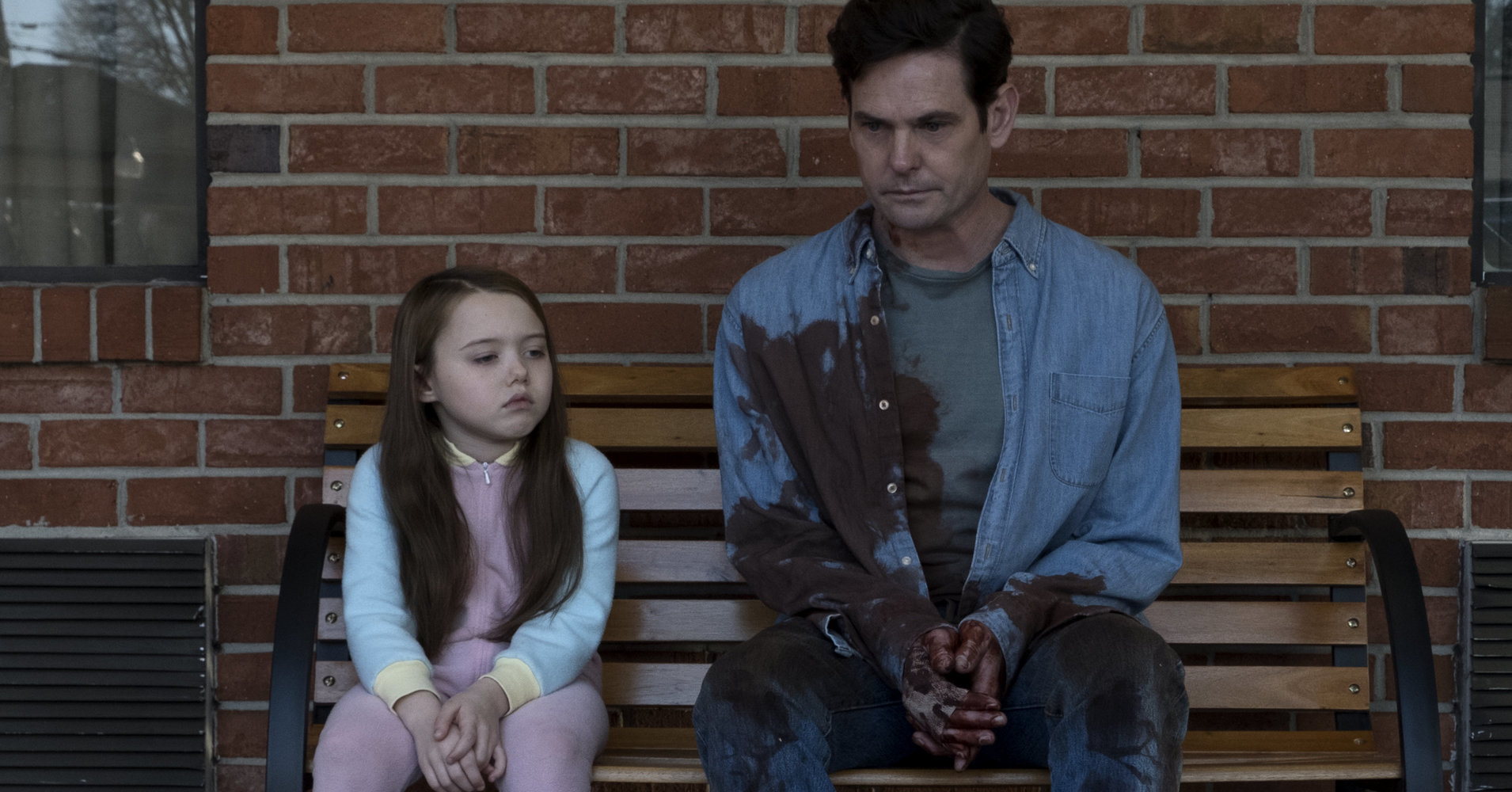[ad_1]
Netflix is getting into the horror business, with a little help from Shirley Jackson and some truly hair-raising ghostly effects.
It’s no wonder ― over the past few years, the horror genre has managed to shock audiences in new and ever-profitable ways. In 2017, an “It” remake earned genuine box-office boffo status, and a pitch-perfect terror-satire about systemic racism (“Get Out”) became an Oscar-winner. In 2018, a new generation of balls-to-the-wall chaos cinema (“Suspiria,” “Hereditary”) is emerging, mining bombastic scares for maximum impact.
But one of the best horror entries of late is also one of the genre’s most subtle, a languidly paced haunted house drama that’s worthy of the attention awarded to even the buzziest genre flicks: Mike Flanagan’s “The Haunting of Hill House.”
Based on Jackson’s novel of the same name, Flanagan’s 10-part Netflix series plays more like a protracted horror film than a television show, one that marries the novel’s masterful sense of supernatural dread with raw depictions of trauma and mental illness.
The series portrays two eras of the Crain family ― a departure from Jackson’s novel, which revolves around a crew of near-strangers ― and spends the majority of its run time in the present day, focusing on the deeply damaged siblings as they process the strange events they experienced decades ago at Hill House. There’s Shirley (Elizabeth Reaser), the icy eldest sister who controls her relationship to death through her work at a funeral home; Steven (Michiel Huisman), who has immortalized his childhood with a novel, which, cheekily, is also titled “The Haunting of Hill House”; the emotionally stunted, clairvoyant Theodora (frequent Flanagan collaborator Kate Siegel); and twins Nell (Victoria Pedretti) and Luke (Oliver Jackson-Cohen), whose once-uncanny connection was wrenched apart following their experiences as children.
For a show so plainly about, well, a haunted house, “The Haunting of Hill House” spends a significant amount of time outside of the eponymous home. Yet Flanagan manages to sustain a relentless sense of confinement throughout each of the 10 episodes, once with an episode-length single take that’s as technically stunning as it is impactful. Whereas Jackson’s book could be read as ’50s-era staid and chilly, Flanagan imbues even the eeriest of concepts with familial warmth, then deepens them with a sly attention to detail.
There are other strengths at work here ― the rich exploration of the Crain family women and the lasting wounds of their trauma; the disturbing imagery that sparingly dots each episode; and the intimations of the beautiful logic of the afterlife. But beyond all of its loftier qualities, “The Haunting of Hill House” is one of the scariest things you’ll watch this year (or at least this Halloween).
Ahead of the series’ release on Netflix this weekend, I spoke with Flanagan about his television tour de force. Here’s what he had to say about the series’ subtle (and not-so-subtle) references to the original novel, and whether he believes in malevolent ghosts.

Netflix
On significantly altering the source material:
It was always clear to me that a straight adaptation wouldn’t be sustainable for an entire season. I also felt like Robert Wise had done a near-perfect job adapting the novel back in 1963, and it didn’t seem like we’d top that if we tried to head down the same path, so expansion was very necessary. I heard someone describe this as an “echo” of the novel, as opposed to an adaptation, and that feels right to me. I really wanted to deconstruct the book, extract characters, moments, themes and even individual lines of prose, and reassemble them into something new.
As far as the decision to make it a family, I’ve always been very drawn to familial stories. Characters come with a shorthand baked in, and interact with each other in a very different way. If we’d gone with strangers, we’d have spent the first half of the series being forced to watch them figure each other out. The great thing about a family is that the dynamics are already there, even if the characters don’t truly understand them. There’s a difference in the way they speak to each other, a heightened emotionality. I was also just fascinated by the opportunity to explore the same events through the eyes of people who were connected, but far apart. No better way to cultivate that kind of distance and closeness than with a family.
On deciding to spend the majority of the series outside of Hill House:
I felt that spending the entirety of the story in the house would work well in a feature film structure, but would be too claustrophobic for long-form. I also thought we could create two distinct Hill Houses this way ― the Hill House we see from the inside looking out, and the Hill House we see from the outside looking in.
I was also really intrigued by exploring the aftermath of a haunting ― typically, in horror stories, the unlucky victims of a haunting leave the house, or exorcise the demon, and then the credits roll. I was really fascinated by the question of what happened after, and how someone would carry that trauma ― or even some of the ghosts themselves ― with them into their lives.
On including the book “The Haunting of Hill House” in the series itself:
That was one of the earliest ideas I had. I wanted to see the book in someone’s hands, and give us a way into some of Jackson’s exquisite prose. Once we had decided that Steven was a writer, I knew I wanted him to be able to quote the book directly. And the idea that our version of “The Haunting of Hill House” novel would be a controversial plot element for the siblings was really irresistible.
On Easter eggs and callbacks to the source material:
Shirley was definitely named after Shirley Jackson. Steven was named for Steven Spielberg, a little nod because Amblin Partners had brought this project to me. We pulled a number of names from the book throughout, and a few references to the Robert Wise film as well. Shirley’s last name, Harris, is for Julie Harris, who played Nell in Wise’s film. You’ll see little references on the hotel ― the Markway Inn, named for Wise’s alteration of Dr. Montague from the book.
Aside from the obvious ones, we tried to pull small names throughout the book as often as we could. By the 10th episode, we have characters quoting entire paragraphs from the novel. We tried to get as much in as we possibly could.

Netflix
On the setting the series in two time periods:
It’s a structure I first started to play with during [the 2013 horror film] “Oculus” and I really enjoyed that. I’d always wanted to push it further, and this seemed like the perfect opportunity. Having 10 hours to play with really opened up the structure, and gave us a chance to focus on each character and their limited perspective on the events of both the past and present. The structure was one of the things I was most excited about, and I really hope it feeds into the kind of disorientation that I felt when reading the book for the first time.
On the series’ unreliable narrators:
There’s nothing more effective than an unreliable narrator, and that point has maybe never been made as well as it was in Jackson’s book. I’ve never been able to decide if I thought the Hill House of the novel was actually haunted, or if Eleanor was simply losing her mind. We all knew that ambiguity had to remain intact. As far walking that line, that was a constant conversation between the writers, and eventually the actors. Now and again we’d feel like we pushed it too far in one direction or another and we’d have to correct the course. It was a really difficult line to walk.
On constructing the actual Hill House:
We built the entire interior of the house on a single soundstage. It was a fully functional, two-story set, and the most impressive build I’ve ever been able work in. The exterior was a lot harder to come by. We scouted for months, and then finally found that house nestled in the woods in the middle of nowhere Georgia. It had no business being there. It was such a strange, beautiful, schizophrenic house. … We were incredibly lucky to find it, and we didn’t touch it. That house is shown pretty much exactly how it is in real life. It represented the character of the show perfectly, I thought, and was one of a million instances of luck that made this whole thing possible.

Netflix
On the series’ incredible restraint:
I’m a firm believer that what you don’t see is always scarier than what you do. Given my druthers, I’d love to approach this show the way Robert Wise did in ’63, which didn’t show you anything at all. He used sound design and great acting to create more dread than any CGI ghost ever has. For this, I knew we couldn’t sustain that for 10 hours, so it was a given that we’d show our ghosts. I just wanted them to mean something. They’re only scary if they’re organic to the characters. If you don’t care about the people, the ghosts don’t mean a thing. I wanted to give the audience at least two legitimate scares per episode, and hopefully more, but for each of those scares I wanted to devote at least three other beats to character. That ratio felt right.
On making horror for the small screen:
The methods aren’t too different, but there are nuances. At home, people are more likely to be distracted than in a theatrical environment. They’re checking their phones, pausing to get a snack, or sometimes jumping from show to show. Building and sustaining tension is always my priority, so home entertainment provides challenges to that. But the mechanics are still the same. I did find myself lensing close-ups more often than I do in theatrical work, just because I wanted to keep the viewer as close to the characters as possible. But otherwise the bag of tricks is very similar, just a little smaller.
On if he believes in ghosts:
I’m actually a skeptic myself. Of everyone, I identify the most with Steven in this regard. I’m wide open to evidence of the supernatural, but I also think that the majority of those experiences are probably natural phenomena we don’t understand just yet. And I haven’t ever seen anything that’s convinced me that there is such a thing as the supernatural. That said, I’d love to experience something that would make me rethink things. And it informs my work in the sense that I always try to include a rational explanation for the supernatural in my films, even if I abandon it by the third act. It’s a fun tug of war for me.
This interview has been edited and condensed for clarity.
[ad_2]
Source link

